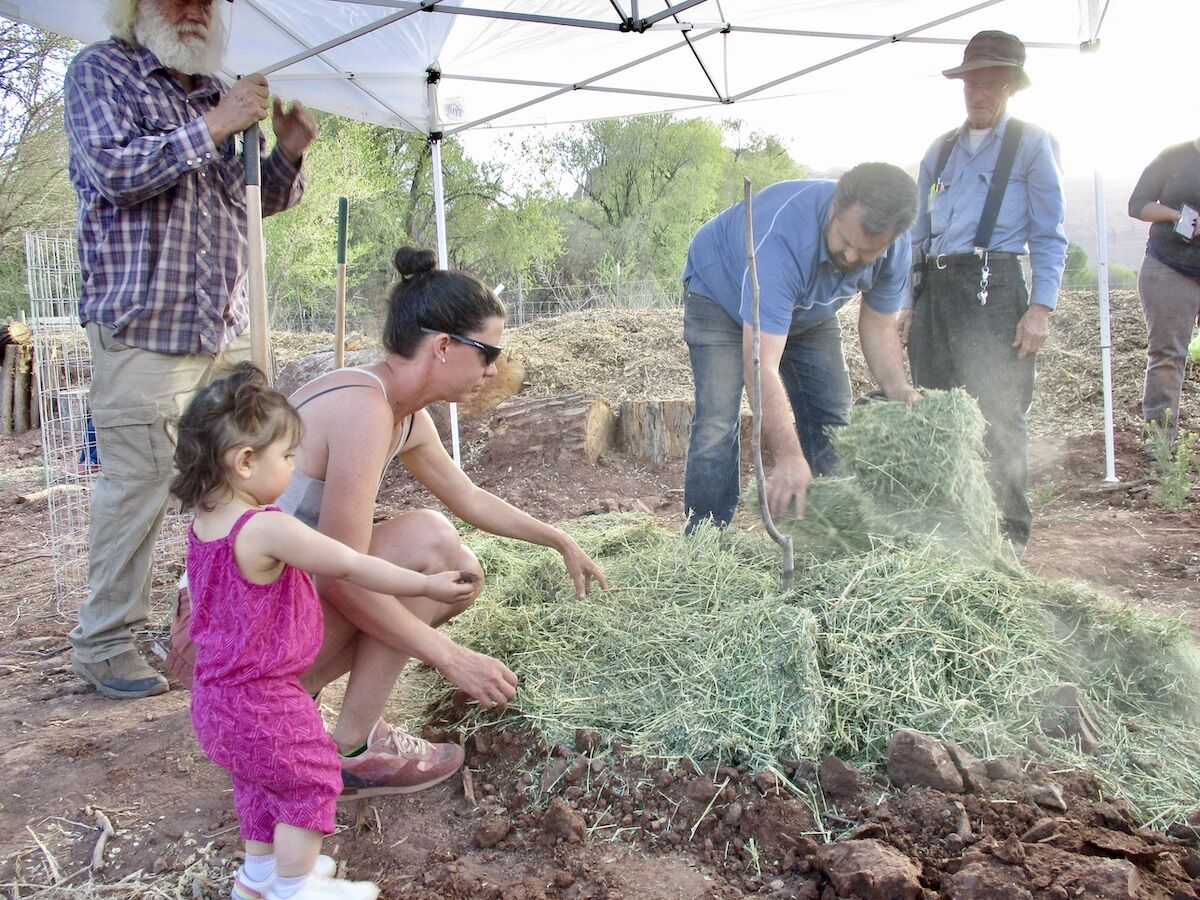Some information may be outdated.
On the evening of April 18, a dozen or so community members celebrated a new orchard planted this spring at Our Village Community Center. Fifty-two fruit and nut trees—looking for now like bare sticks—are lined up in the ground in a field on Our Village property, each in a protective chicken-wire cage supported by t-posts. In a few years, they’ll flower and fruit, providing a connection to Moab’s agricultural past and a place for community members to experience fresh-from-the-branch produce.
Annie Thomas, founder and executive director of Our Village Community Center, has a vision to connect generations of community members to each other, nature, and the landscape. The Moab Historic Orchard Revitalization Project—the formal name of the orchard initiative—has already brought together diverse community members who donated hundreds of hours to prepare the orchard and plant the trees.
Along with many families and individuals, partners and donors include the Moab Manna Project (which grows potatoes for the community, currently at the Our Village Community Center), the Castle Valley and Moab Seventh-Day Adventist Churches, the Moab Faith-Based Coalition, permaculture landscaping company TerraSophia, local flower farm Farmyard, Moab Happenings, Raven’s Rim tour company, the Sego Lily Children’s Garden, and e-bike company Pedego (Thomas also co-owns Pedego with her husband and is affiliated with Sego Lily Children’s Garden). The trees were purchased through a grant from the Grand Conservation District.
The orchard includes a wide variety—just about everything that can grow in Moab, Thomas said: apples, peaches, plums, cherries, nectarines, pomegranates, figs, walnuts, pears, apricots, and quince. Volunteers used a special method of planting the trees: they dug about three feet into the ground, placed the saplings in the holes, and filled in around them with a mixture of compost and topsoil, as well as a special fertilizer made from ocean minerals. Gravel and empty pipes were buried along with the root balls to promote aeration in the soil. The planted trees were mulched with alfalfa hay and will be set up on a drip irrigation system. In a field adjacent to the saplings, one of Moab’s oldest orchards is still standing, a testament to a time when the valley was full of fruit trees.
Once the trees are producing, community members—particularly children—will be invited to explore the orchard and enjoy the fruits. Excess harvest will be directed to Moab families in need and distributed to Our Village volunteers; if there’s more produce left over after that, Thomas said they might consider selling some at local markets or hosting a U-Pick event.
“It’s really for the children,” Thomas said.
During the celebration of the orchard, attendees planted a ceremonial walnut tree to dedicate the project. They buried the sapling in a deep hole, spread hay for mulch over the soil, and soaked the roots with a hose.
Nathan James, the pastor at the Moab Seventh-Day Adventist Church and an organizer and leader of the Moab Manna Project, said a prayer of thanks. At his invitation, people tossed in handfuls of soil, along with their positive energy and intentions for the orchard. Thomas snipped a symbolic length of garden twine with a pair of garden shears to “open” the orchard.
Thomas and James are already planning to host a bigger event, likely a potluck, next spring on Arbor Day to celebrate the first anniversary of the orchard.
In addition to the organizations and businesses mentioned, Thomas would like to thank Abbie Long, Abigail Atkinson, Anne Wilson, Peter Lawson, the Bankhead family, Bitsy and Patrick Tatera, Breann Davis, Emily and Casey Bynum, Gina Griffin, Mike Bynum, Julianne Waters, Laura and Brian Hines, Linda Bynum, Liza Battaini, Margaret Harris, Melanie and Carl Harris, and Sheryl and Steve Koonce.
Appreciate the coverage? Help keep local news alive.
Chip in to support the Moab Sun News.





